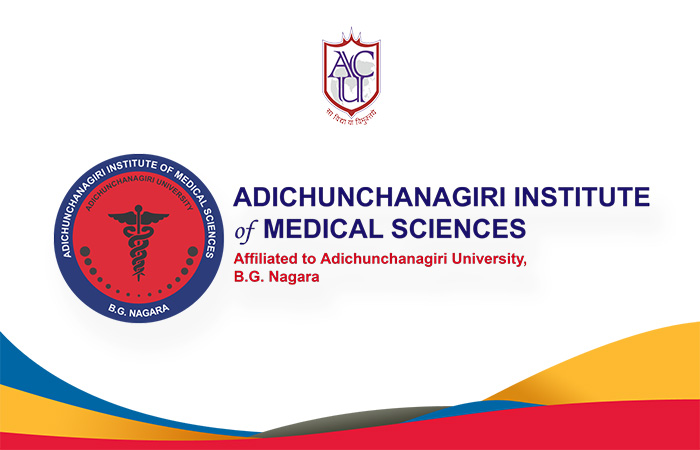|
Level of Event |
Institutional | ||||||||||||||||||||||||||||||||||||||||||||
| Collaboration/Accreditation if any | – | ||||||||||||||||||||||||||||||||||||||||||||
| Date/s and Duration | 25/04/2024, 10:30am to 1:00pm | ||||||||||||||||||||||||||||||||||||||||||||
| Venue | Lecture Hall 1, Adichunchanagiri Institute of Medical Sciences, B.G Nagara | ||||||||||||||||||||||||||||||||||||||||||||
| Details of delegates /target audience |
|
||||||||||||||||||||||||||||||||||||||||||||
| Total Number of delegates/ audiences attended | 20 Teaching Faculties and 250 MBBS Phase 1 2023-24 Batch Students | ||||||||||||||||||||||||||||||||||||||||||||
| Organising Department | Department of Anatomy | ||||||||||||||||||||||||||||||||||||||||||||
| Objective/s of the Event | The guest lecture on the surgical anatomy of the inguinal canal was conducted by Dr. Nishanth Lakshmikantha, a renowned surgeon specializing in abdominal and pelvic surgeries. The aim of the lecture was to provide a comprehensive understanding of the anatomical structures and surgical considerations related to the inguinal canal, a crucial area in hernia repair surgeries and other abdominal procedures | ||||||||||||||||||||||||||||||||||||||||||||
| Brief Report of the Event (in about 200 words) | 1. Anatomical Overview: Dr. Nishanth Lakshmikantha began by elucidating the anatomy of the inguinal canal, emphasizing its location, boundaries, and contents. He discussed the inguinal ligament, spermatic cord (in males), round ligament of the uterus (in females), as well as the various layers of the abdominal wall.
2. Clinical Relevance: The lecture delved into the clinical significance of the inguinal canal, highlighting its role in hernia formation and the common types of hernias encountered in clinical practice. Dr. Nishanth Lakshmikantha provided insights into the presentation, diagnosis, and management of inguinal hernias, underscoring the importance of a thorough understanding of anatomical landmarks for successful surgical outcomes. 3. Surgical Techniques: Practical aspects of surgical interventions in the inguinal region were discussed in detail. Dr. Nishanth Lakshmikantha elucidated various surgical approaches, including open hernia repair (e.g., Bossini, Shouldice) and laparoscopic techniques (e.g., TEP, TAPP), elucidating the advantages and limitations of each approach based on anatomical considerations. 4. Complications and Pitfalls: The lecture also addressed potential complications associated with inguinal hernia repair, such as nerve injuries, recurrence, and chronic pain. Strategies for minimizing complications and optimizing surgical outcomes were discussed, emphasizing the importance of meticulous surgical technique and anatomical knowledge
|
||||||||||||||||||||||||||||||||||||||||||||
| Feedback Analysis | · Structure: Lecture outline was well-structured, covering all the essential aspects of the surgical anatomy of the inguinal canal.
· Clarity: Each section was clearly defined, making it easy for the audience to follow the flow of information. · Relevance: Clinically relevant information was included, which is crucial for understanding the practical implications of the anatomy. · Depth: The depth of information was appropriate for a guest lecture, providing enough detail for understanding without overwhelming the audience. |
||||||||||||||||||||||||||||||||||||||||||||
| Outcome | The guest lecture provided a comprehensive overview of the surgical anatomy of the inguinal canal, equipping attendees with essential knowledge and skills for performing inguinal hernia repair surgeries and other abdominal procedures. Dr. Nishanth Lakshmikantha’s clear elucidation of anatomical structures, clinical correlations, and surgical techniques offered valuable insights into this critical area of surgical practice | ||||||||||||||||||||||||||||||||||||||||||||
| Challenges Faced | · Complexity: The anatomy of the inguinal canal can be complex, especially for those without a medical background. Ensuring that the lecture strikes the right balance between depth of information and accessibility to the audience can be challenging.
· Visualization: Anatomy is often best understood with visual aids such as diagrams, models, or videos. Finding or creating effective visual aids to accompany the lecture may be a challenge. · Engagement: Keeping the audience engaged throughout the lecture, especially when dealing with technical anatomical details, might require creative presentation techniques or interactive elements. Overall, while there are challenges associated with presenting the surgical anatomy of the inguinal canal, your lecture outline appears to effectively address these challenges by providing a well-structured and informative framework.
|
||||||||||||||||||||||||||||||||||||||||||||
| Recommendations | 1. Interactive Elements: Incorporate interactive elements such as case studies, quizzes, or demonstrations to engage the audience actively. This can foster participation and improve retention of key concepts.
2. Clinical Cases: Share relevant clinical cases or anecdotes to illustrate the practical implications of the anatomy. Real-life examples can help contextualize the information and highlight its significance in surgical practice. 3. Demonstration: If possible, include a live or recorded demonstration of surgical techniques related to the inguinal canal. This can provide valuable insights into the practical aspects of surgery and enhance the learning experience for the audience. 4. Q&A Session: Allocate time for a question-and-answer session at the end of the lecture to address any queries or concerns raised by the audience. This encourages engagement and allows for clarification on specific topics. 5. Clear Communication: Ensure that you communicate the information clearly and concisely, using language that is accessible to individuals with varying levels of medical knowledge. Avoid jargon whenever possible and provide explanations for technical terms as needed.
|
||||||||||||||||||||||||||||||||||||||||||||
| Download | Document |


